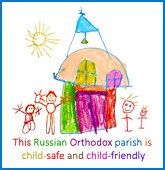Hymnody in the Orthodox liturgical tradition is based on the eight tones of Byzantine church music. A tone is best understood as a set of musical patterns. Originating in Greek antiquity, each tone began on a different note and had a different musical character. In addition, hymnody composed in a tone originally followed a metrical structure – that is, rules of composition regulating the flow of the text – specific to that tone.
The Russian Church received this system of hymnody from Byzantium together with the Orthodox Christian faith. In time, the Russian Church developed its own tones that resembled the Byzantine system in name only. This system has also developed over time, responding to various musical influences and incorporating part-singing.
In Russian church singing, there are five musical patterns within each tone. These are for the five different kinds of hymns (for example, troparia and stichera) and verses that are customarily sung.
The hymnody appointed for the daily services is set out in a book called the Octoechos, the “book of eight tones”. The origins of this book is obscure, but Saint John of Damascus (+749 AD) is known to have had a major influence on it.
Material from the Octoechos is organised by days and reflects the weekly cycle of commemorations in the Orthodox liturgical tradition: the Resurrection on Sundays; the holy Angels on Mondays; Saint John the Baptist on Tuesdays; the Cross on Wednesdays and Fridays; the holy Apostles and Saint Nicholas on Thursdays; and all saints and the departed on Saturdays.
As each Sunday is a commemoration of the Resurrection, the Octoechos is used on Sundays throughout the year. It is only set aside when a Great Feast of the Lord falls on a Sunday.












